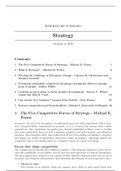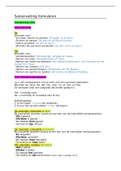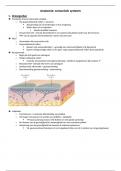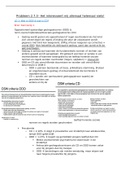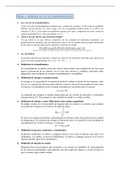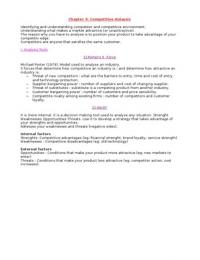Book: Marketing Research An Applied Orientation by N. K. Malhotra
Chapter 2: Defining the Marketing Research Problem and Developing an Approach
2.1. Importance of Defining the Problem
Problem definition is a broad statement of the general problem and identification of the specific components of
the marketing research problem. Problem definition is the most important step as it determines how the research
can be designed and conducted properly.
2.2. The Process of Defining the Problem and Developing an Approach
The tasks involved in problem definition consist of discussions with the decision makers, interviews with
industry experts and other knowledgeable individuals, analysis of secondary data, and sometimes qualitative
research. These tasks help the researcher to understand the background of the problem. Essential environmental
factors bearing on the problem should be evaluated. Understanding the environmental context facilitates the
identification of the management decision problem; this problem is translated into a marketing research problem.
Based on the problem, an appropriate approach is developed. Components of the approach consists of an
objective / theoretical framework, analytical methods, research question, hypotheses and specification of the
information needed.
2.3. Tasks Involved
2.3.1. Discussions with Decision Makers
Discussion with decision makers (DM) are important. The decision makers need to understand the capabilities
and limitations of research. To identify the management problem, the researcher must possess considerable skill
in interacting with the DM. However, it might be difficult to meet the DM. The problem audit provides a useful
framework for interacting with the DM and identifying the underlying causes of the problem. The problem audit
is a comprehensive examination of a marketing problem with the purpose of understanding its origin and nature.
A problem audit, which involves extensive interaction between the DM and the researchers, can greatly facilitate
problem definition by determining the underlying causes. The interaction between the DM and the researcher
should be characterized by the seven Cs:
1. Communication: Free exchange of ideas between the DM and researcher
2. Cooperation: Marketing research is a team project where both parties communicate
3. Confidence: The interaction between the DM and the researcher should be guided by mutual trust
4. Candor: There should be no hidden agendas, openness is key.
5. Closeness: Feelings of warmth and closeness should characterize the relationship between both
6. Continuity: The DM and the researcher must interact continually rather than sporadically
7. Creativity: The interaction between the DM and the researcher should be creative
2.3.2. Interviews with Industry Experts
Interviews with industry expects may help formulate the marketing research problem. Experience survey is an
interview with people very knowledgeable about the general topic being investigated (another word is key-
informant technique). In technological context, a Lead-user survey involves obtaining information from the
lead users of the technology.
Two potential difficulties may arise when seeking advice from experts:
1. Some individuals claim to be knowledgeable but may not really possess expertise
2. It may be difficult to locate and obtain help from experts who are outside the client organization.
2.3.3. Secondary Data Analysis
Secondary data are data collected for some purpose other than the problem at hand. It includes information
made available by business, government, commercial marketing research firms and computerized databases.
Secondary data provides background information. Primary data are originated by the researcher for the specific
purpose of addressing the research problem. Primary data should not be collected until the relevant secondary
data have been fully analysed.
2.3.4. Qualitative Research
Qualitative research is an unstructured, exploratory research methodology based on small samples intended to
provide insight and understanding the problem setting. It may utilize qualitative techniques such as focus group,
,word association and depth interviews. Exploratory research techniques are pilot surveys (= more open-ended
questions and smaller sample size) and case studies (= involve an intensive examination of a few selected cases
of the phenomenon of interest).
2.4. Environmental Context of the Problem
Environmental context of the problem are a set of factors having an impact on the definition of the marketing
research problem, including past information and forecasts, resources and constraints of the firm, objectives of
the decision maker, buyer behaviour, legal environment, economic environment, and marketing and
technological skills of the firm (PROBLEM).
2.4.1. Past Information and Forecasts
Past information and forecast (with respect to sales, market share, profitability, technology, population,
demographics, and lifestyle) can help the researcher understand the underlying marketing research problem.
2.4.2. Resources and Constraints
To formulate a marketing research problem of appropriate scope, it is necessary to take into account the
resources available and the constraints on the organization (cost & time). The scope of the marketing research
problem may have to be reduced to accommodate budget constraints. Other constraints such as client firm’s
personnel, organizational structure and culture, or decision-making styles, should be identifies to determine the
value of the research to the decision maker.
2.4.3. Objectives
Objectives are goals the organization and of the decision maker that must be considered in order to conduct
successful marketing research. Two types of objectives should be understood:
1. Organizational objectives
2. Personal objectives by the decision maker
2.4.4. Buyer Behaviour
Buyer behaviour is a body of knowledge that tries to understand and predict consumers’ reactions based on
individuals’ specific characteristics. Buyer behaviour factors that should be considered:
1. Number and geographical location of the buyers and nonbuyers
2. Demographic and psychological characteristics
3. Product consumption habits and the consumption of related product categories
4. (Social) Media consumption behaviour and response to promotions
5. Price sensitivity
6. Patronage of retail outlets
7. Buyer preferences
2.4.5. Legal Environment
Legal environment includes public policies, laws, government agencies, and pressure groups that influence and
regulate various organizations and individuals in society. Important areas of laws include patents, trademarks,
royalties, trade agreements, taxes, and tariffs.
2.4.6. Economic Environment
Economic environment is comprised of purchasing power, gross income, disposable income, discretionary
income, prices, savings, credit availability, and general economic conditions. The general state of the economy
influences the willingness of consumers and businesses to take on credit and spend on big-ticket items.
2.4.7. Marketing and Technological Skills
A firm’s marketing and technological skills greatly influence the marketing programs and strategies that can be
implemented.
,2.5. Management Decision Problem and Marketing Research Problem
Management decision problem are problems confronting the decision maker, it asks what the decision maker
needs to do. This problem is action oriented and focuses on symptoms. Marketing research problem is a
problem that entails determining what information is needed and how it can be obtained in the most feasible
way. This problem is information oriented and focuses on the underlying causes. The distinction and linkage
between the management decision problem and the marketing research problem helps us in understanding how
the marketing research problem should be defined.
2.6. Defining the Marketing Research Problem
A general rule in defining the marketing research problem is:
1. The definition should allow the researcher to obtain all the information needed to address the management
decision problem
2. The definition should guide the researcher in proceeding with the project; should be specific enough to
suggest an approach to the problem or a research design, however it shouldn’t be too narrow.
Broad statement provides perspective on the problem and acts as a safeguard against committing a too narrow
marketing research problem. Specific components focus on the key aspects of the problem and provide clear
guidelines on how to proceed further, thereby reducing the likelihood of having a too broad marketing research
problem.
2.7. Components of the Approach
The outputs of the approach development process should include the following components:
objective/theoretical framework, analytical models, research questions, hypotheses, and specification of
information needed.
2.7.1. Objective / Theoretical Framework
Research should be based on objective evidence and supported by theory. Theory is a conceptual scheme based
on foundational statements, called axioms, that are assumed to be true. Objective evidence is gathered by
compiling relevant findings from secondary sources, unbiased evidence that is supported by empirical findings.
A theory serves as a foundation on which the researcher can organize and interpret findings. Theory also
influences the research procedure.
2.7.2. Analytical Model
Analytical model is an explicit specification of a set of variables and their interrelationships designed to
represent some real system or process in whole or in part. Verbal models are analytical models that provide a
written representation of the relationships between variables. Graphical models are analytical models that
provide a visual picture of the relationships between variables, not designed to provide numerical.
Mathematical models are analytical models that explicitly describe the relationships between variables, usually
in equation form.
2.7.3. Research Questions
Research questions are refined statement of the specific components of the problem. Research questions ask
what specific information is required with respect to the problem components. If the research questions are
answered by the research, the information should aid the decision maker. Research questions may be further
refined into one or more hypotheses.
2.7.4. Hypotheses
Hypothesis is an unproven statement or proposition about a factor or phenomenon that is of interest to the
researcher. Often a hypothesis is a possible answer to the research question. Whereas research questions are
interrogative, hypotheses are declarative and can be tested empirically.
2.7.5. Specification of Information Needed
Based on the problem, analytical framework, research questions and hypotheses, the researcher can determine
what information should be obtained in the marketing research project. It is helpful to make a list specifying all
the information that should be collected.
, 2.8. International Marketing Research
Before defining the problem, the researcher must isolate and examine the impact of the self-reference criterion
(SRC), or the unconscious reference to one’s own cultural values. The following steps help researchers account
for environmental and cultural differences when defining the problem in an international marketing context:
Step 1. Define the marketing research problem in terms of domestic environmental and cultural factors.
Step 2. Define the marketing research problem in terms of foreign environmental and cultural factors. This task
requires input from researchers familiar with the foreign environment.
Step 3. Isolate the self-reference criterion (SRC) influence on the problem and examine it carefully to see how it
complicates the problem.
Step 4. Redefine the problem without the SRC influence and address it for the foreign market situation.
2.9. Mobile Marketing Research
Mobile marketing research (MMR) can be useful in defining the problem as well as in developing an approach
to the problem. Researcher can use mobile communication to interact with the decision maker(s) and with the
industry experts.
2.10. Ethics in Marketing Research
Ethical issues arise if the process of defining the problem and developing an approach is compromised by the
personal agenda of the client (DM) or the researcher. Several ethical issues also arise when developing an
approach; when a client solicits proposals. The research firm has the ethical obligation to develop an appropriate
approach. Ethical situations should be resolved by using the seven Cs: communication, cooperation, confidence,
candor, closeness, continuity, and creativity.



